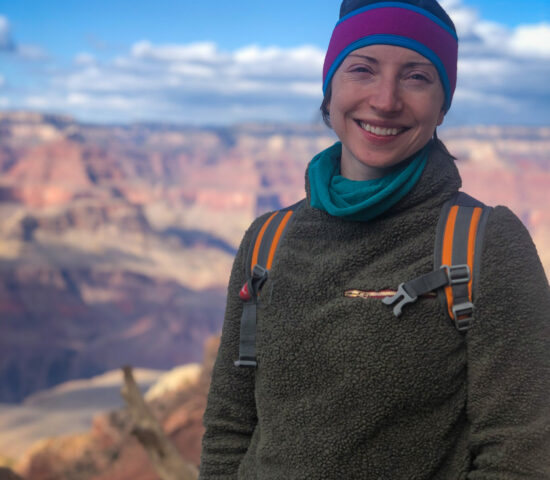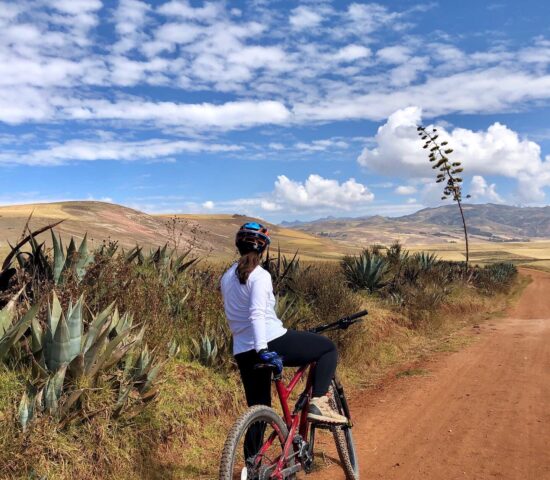Inquisitive | Restorative | Balanced
Originally from the Finger Lakes area of New York, Emma developed a love for exploration and adventure from an early age; her grandfather was an intrepid traveler who spent years exploring Africa and Asia in the 50s and 60s. During the holidays, he would share his picture slides from distant lands with the family—inspired by her grandfather, Emma began to plot her own adventures. Her first taste of international travel came through her journeys to Latin America in high school and college, igniting a passion for discovering new cultures and landscapes. Her interest in the cultural nuances and language differences between countries led her to a Spanish and Latin American Studies degree. During that time, she studied abroad in Costa Rica and completed a tourism internship in Buenos Aires. After college, she moved to Chile and worked as an English teacher for four years in Santiago. Later, she spent six months as a caretaker on a sheep ranch in the Aysen region of Patagonia.
After returning to the U.S., she worked with language interpreters, TEFL teachers, and business travelers in Rochester and Boston before finding her place in South American travel. She loves that her work and interests intersect seamlessly, and she is passionate about the future of sustainable travel in Latin America. Currently residing in Austin, TX, Emma enjoys exploring Texas state parks with her husband and two dogs. At every opportunity, she ventures south to explore more of the mighty continent that has captured her heart.

My Greatest Adventure
Working as a caretaker on a private ranch in Aysen, Patagonia. My husband and I spent six months living in complete isolation. We took care of seven dogs, a flock of chickens, three barn cats, and twenty sheep—which grew to forty when the lambs were born during the winter. We lived in a small two-room cabin (plus the seven dogs) with no running water and a wood-burning stove for warmth and cooking. Our main jobs were to look after the sheep and take the dogs for walks twice daily. Dog walks included hikes through an old-growth forest, treks out to Colonia Lake, or up to a rocky tributary of the Baker River. Our closest neighbor was across the river, which we could not cross without our boss’s Unimog truck or boat. Our stay allowed us to feel the very essence of Patagonia and gave us a peek into the lives of ranchers and locals. We filled pots of water in the glacier-fed river for drinking and chipped the ice away when it froze over. We washed our clothes in the river and dried them by the fire. The sun went down around 16:30, so days were short and often cold. Days were defined by chopping firewood and refilling the reserve— if we didn’t, we wouldn’t be able to eat or keep warm at night. It’s humbling to know that my greatest adventure is just the day-to-day way of life of many Patagonians, and I have an immense respect for them.
My Favorite Destinations
Put me anywhere along the spine of the Andes, and I will be happy. That said, the Carretera Austral in Chile is a particularly special place for me because I lived there briefly and it enthralled me. It has a bit less drama than the peaks of Torres del Paine, but it’s the Patagonia that lives in my mind: Patagonia without the thru-hiking crowds dressed in fancy trekking gear. The region is the most sparsely populated in Chile and Gaucho culture holds strong without being commodified for tourism. The area has garnered international attention in the past couple of years, thanks to the record-breaking conservation efforts of Doug and Kris Tompkins and the recent “Wild Life” movie. Still, the region has a much longer history of conservation. I was lucky enough to live there in 2014 when the grassroots “Patagonia Sin Represas” movement succeeded after seven years of collective efforts, and the government scrapped the proposed hydroelectric dam project that would have flooded 15,000 acres of private land and natural reserves, irrevocably changing the landscape and history of the region. It’s what I love most about Andean cultures: their strong roots, way of life, and connection to the world around them are infectious to visitors and motivate the rest of us to live more sustainably and in tune with the earth.

Contact Us
Ready to start your own incredible adventure?
Fill out the form and we will be in touch



